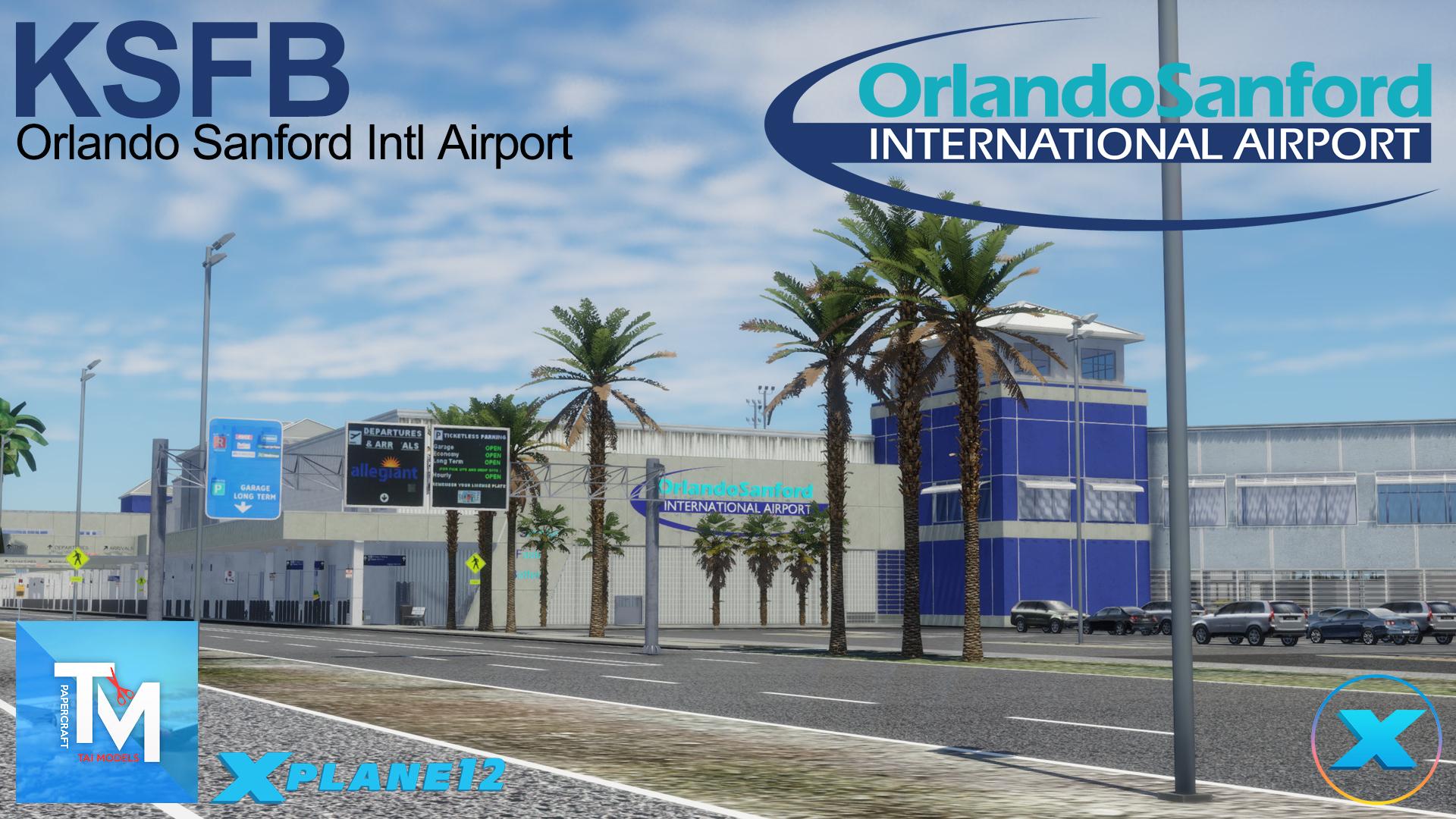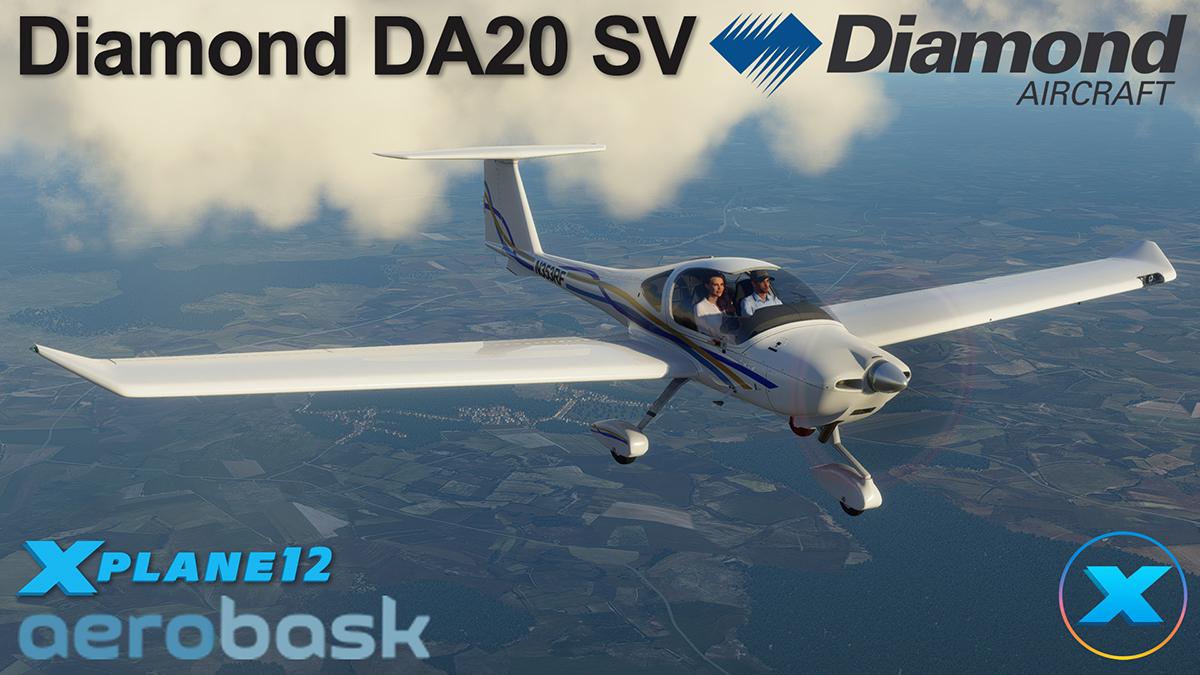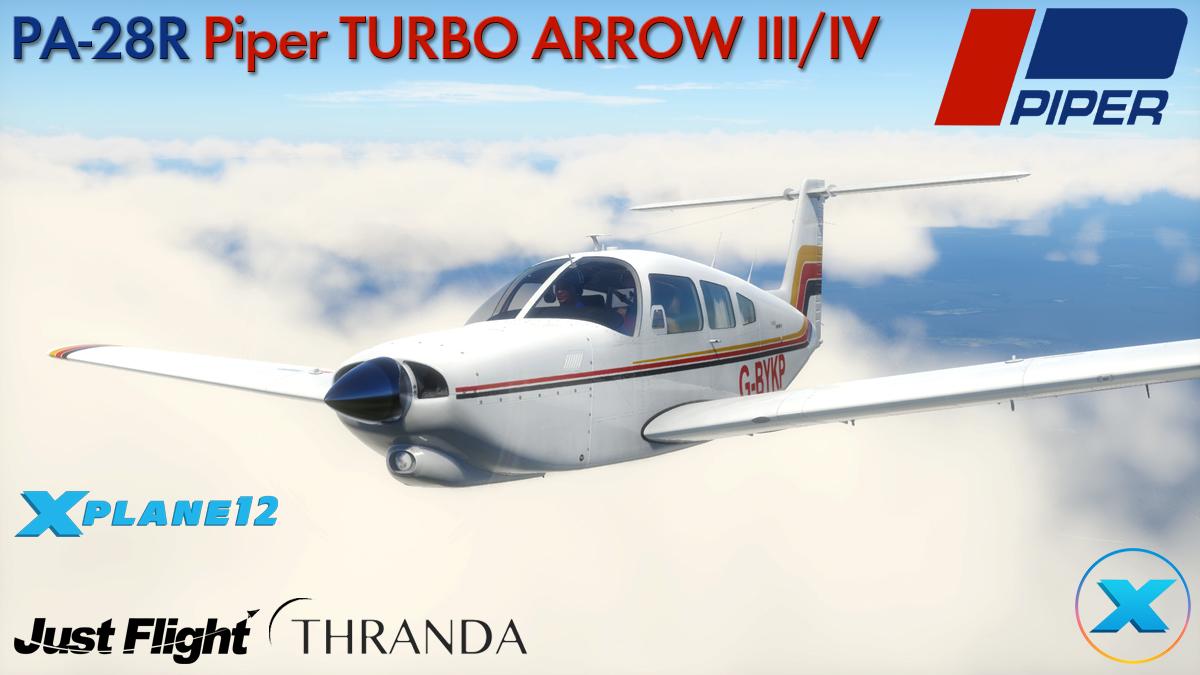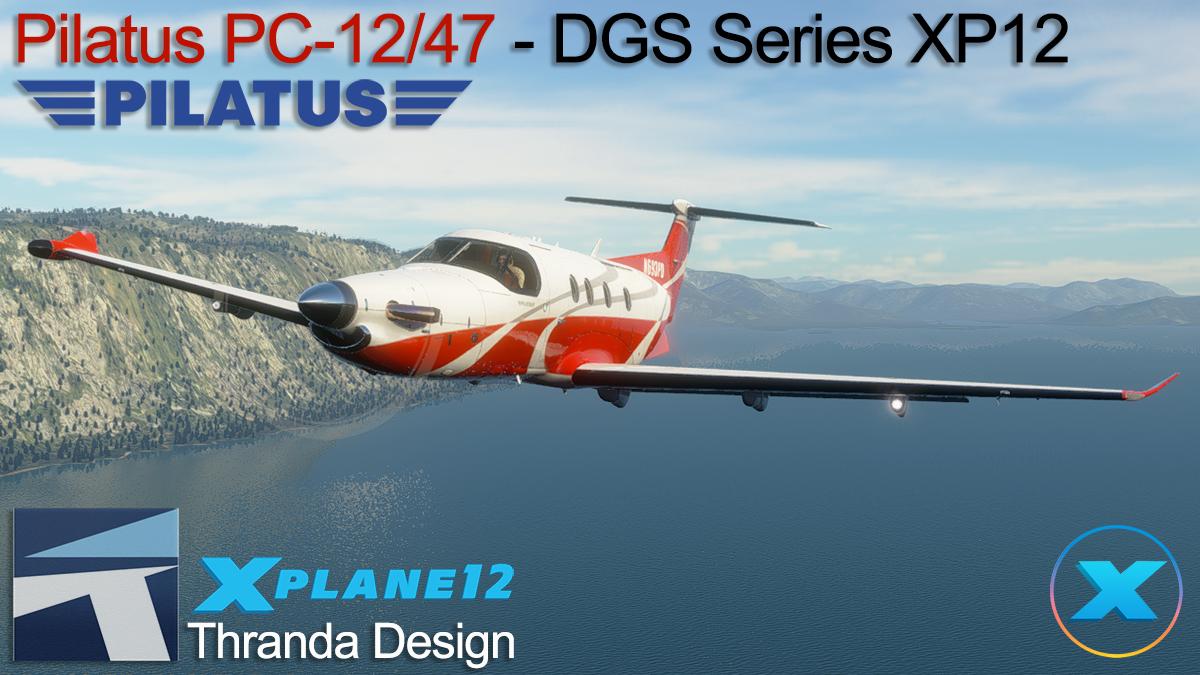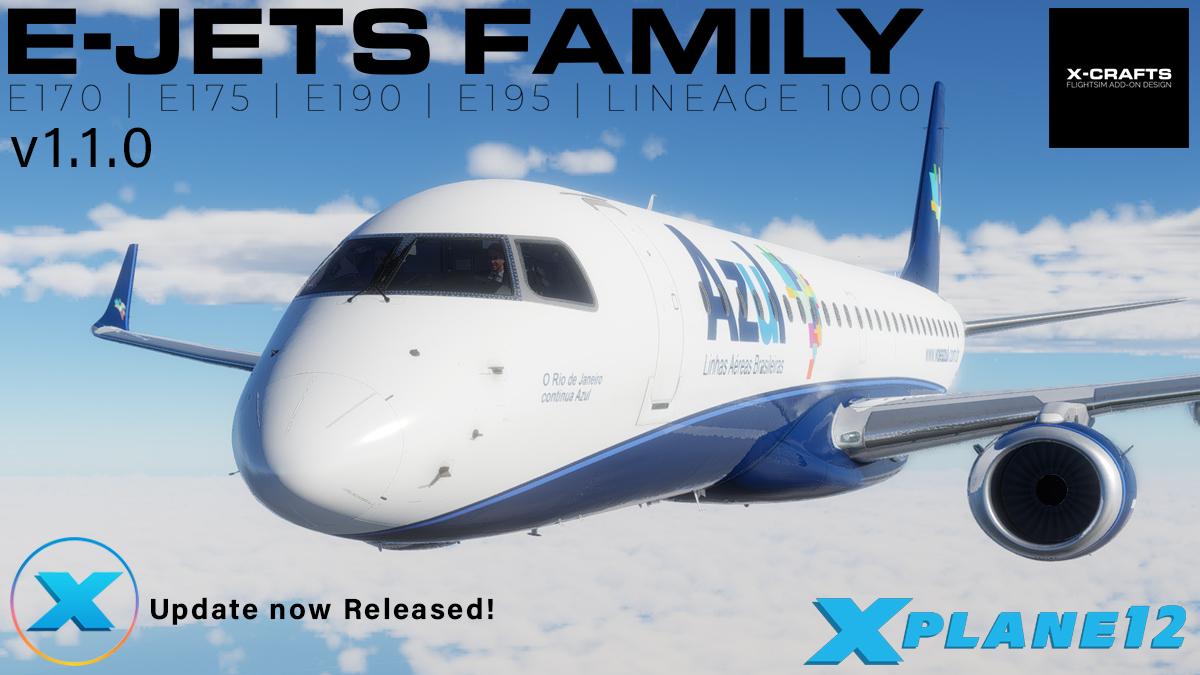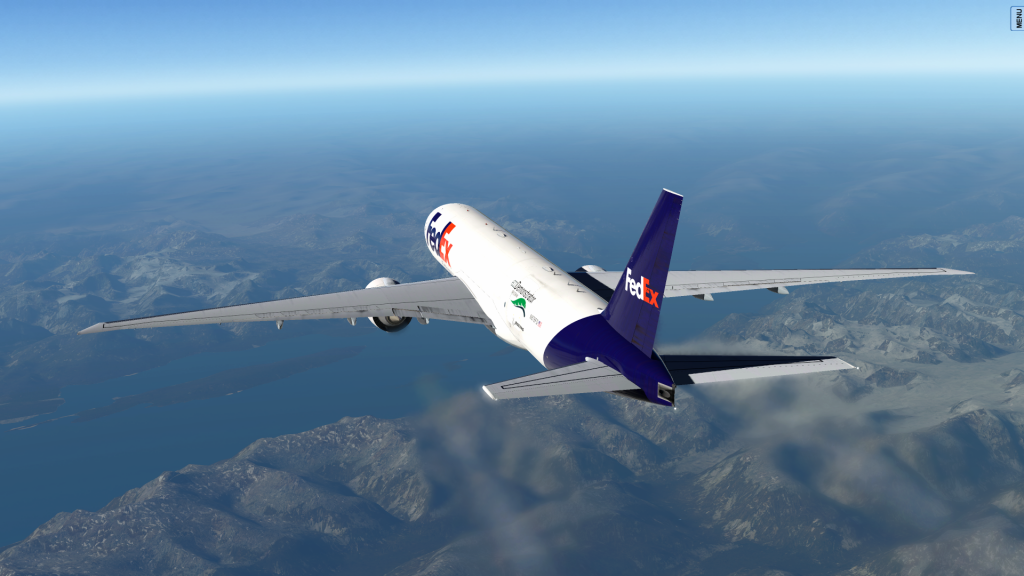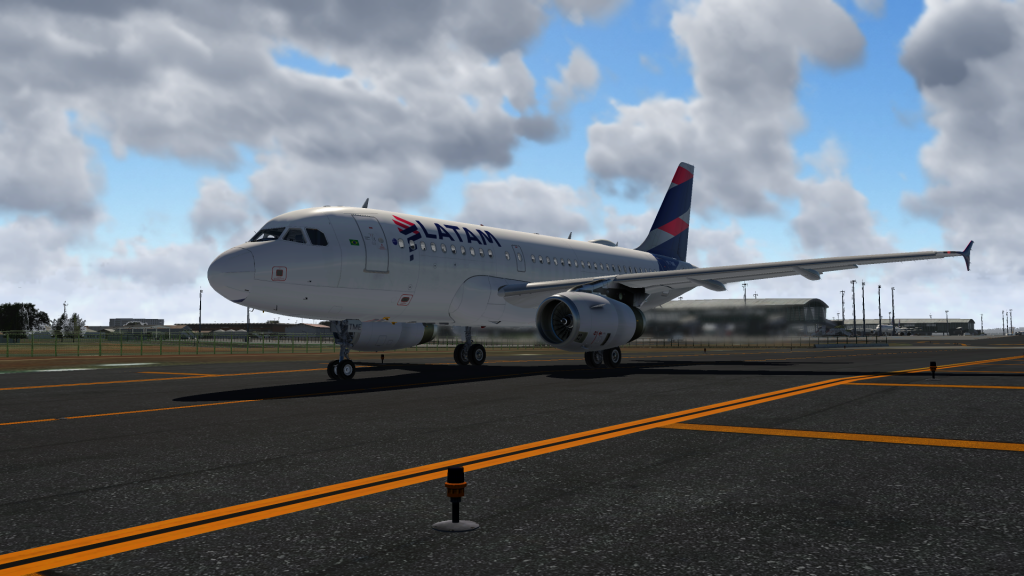-
Latest Posts
-
Scenery Review : KSFB - Orlando Sanford Intl Airport, USA by Taimodels In central Florida USA, Orlando is a tourist mecca. The focus is of course the mega complexes of Disney World, but also situated here are Universal's Studios, Seaworld and Legoland, if you want more, there is also Fun Spot America, Icon Park and my favorite Gatorland. The central hub for Orlando is MCO or Orlando International Airport set south of the city, central is ORL or Orlando Executive, a great base for General Aviation and Biz Jets... but there is one more airport, basically little known and positioned 27 miles north of Orlando City in SFB Orlando Sanford International Airport. Orlando Sanford was originally built as Naval Air Station Sanford and was opened November 3, 1942, now 82 years ago . It was a Master Jet Base for carrier-based attack and reconnaissance aircraft, and was used by the U.S. Navy until 1969. The airport is currently owned and operated by the Sanford Airport Authority. The majority of SFB's passenger traffic has been domestic; this is mostly attributable to the entrance of Las Vegas–based Allegiant Air, for which Sanford is a focus city. But it was also popular with Thomson Airways (now TUI Airways), that began operating routes from UK airports. This was the largest international airline at the airport having served eight destinations around the UK. However, in November 2019, TUI Airways announced that from 2022, it would switch their Orlando operations from Sanford to Melbourne Orlando International Airport including the daily flights to/from those 8 British airports. This will bring their operations nearer to Port Canaveral where TUI Cruises will operate from in coming years. As a package holiday company this brings passengers closer to their cruises, although it has angered many TUI passengers who fly with the company to visit Orlando for Walt Disney World and Universal Orlando Resort. This is another scenery release by Taimodels, an odd choice, but Taimodels have done these small regional based sceneries in the past, mainly YBCS Cairns and EGCC Manchester, so Sanford fits right in there between the usual mega airports from this prolific developer. Orlando Sanford International Airport IATA: SFB - ICAO: KSFB - FAA LID: SFB 9C/27C - 3,578ft (1,091m) - Asphalt 9L/27R - 11,002ft (3,353m) - Asphalt 9R/27L - 5,839ft (1,780m) - Asphalt 18/36 - 6,002ft (1,829m) - Asphalt/concrete Elevation AMSL55 ft / 17 m Taimodels Sanford intergration with the X-Plane scenery is relatively very good, the custom textures are slightly noticeable, but not glaringly so, they could have however been better matched (more darker/greener) but overall you wouldn't notice the differences. Because of the multiple runway setup, the taxiway system is a bit complicated, yes 9L/27R is relatively straight forward, but otherwise charts are required for the complex navigation. Sanford's runway layout is relative to it's Military origins. Four runways that allow independent operations on each. The 9L/27R Main 11,000 ft runway north, the 9R/27L 5,800 ft medium strip south... ... 18/36 6,000ft Cross, and the tiny in the front of the terminal area 5,800 ft 9C/27C strip. So you have a great choice of runway here depending on the equipment you are flying, from very light aircraft, standard GA, twins, commuter, regional and of course main line services. Terminals There are two Terminals at SFB, the older Terminal A and the newer Terminal B, the terminals are defined by the three concourses. Terminal A Terminal A was built as part of the airport’s efforts to support growing passenger traffic in the late 1980s and early 1990s. It primarily served domestic charter and leisure travelers. In the 1990 with the rise of charter and budget airlines, Sanford Airport grew in popularity as an alternative to Orlando International Airport (MCO). Terminal A was expanded to accommodate this increased demand especially with the arrival of Allegiant Air with an additional concourse and gates, and improved passenger facilities, later the second concourse was absorbed by Terminal B. The original terminal became a hub for international charter flights, particularly from the UK and Europe, operated by airlines like TUI Airways and Icelandair. Gates 10 to 16 are set on the single west concourse. Externally all the terminal buildings here are a bit nondescript, or even plain, but the excellent panel detail is there if you get in close enough, and nicely done it is, the ground clutter is also well done, but only generic, and not airline or airport branded. I couldn't activate the Airbridges, neither by X-Plane's Ground Handling, or OpenSAM, and no animated traffic is highly noticeable. Terminal A Landside however is highly detailed, the arrival drop-off zones are really well done. But like Taimodels HEAC Cairo, the bolder colours don't work (SFB in reality is more of a softer blue). The heavy blue and white brings out the model side, more than a realism feel. But you can't say it not well done because it is... the detail continues inside, as all the internal areas are well detailed and modeled. Highlight here is the NAS Sanford Memorial, that is located in the terminal, it comes with restored PV-1 Ventura Bomber sitting on the roof of the museum. Basically you can walk in all the interior areas and move out to all the three concourses. All check-in and waiting areas are extensively detailed, and shows the high standard required today in detail for Simulation Airport Scenery. Again missing are animations and people, so as it is really well done by Taimodels, it also feels a bit empty of life. Terminal B Terminal B was constructed in the early 90's for more expansion of the International charter capacity. And over time Terminal B underwent several more expansions and renovations to keep up with demand. This included adding the additional gates, improving baggage handling systems, and upgrading passenger facilities. In 2010, SFB Terminal B underwent several more modernization efforts to update and expand, with more new gates (four) with a newly constructed concourse that was added to the east. This improved passenger waiting areas, better baggage handling systems, and enhanced retail and more food options were also added. Gates 1 to 4 are on the new (east) concourse, and gates 5 to 9 are on the central concourse. As with Terminal A, Terminal B has the same excellent Landside Arrivals and internal terminal detail... The new eastern Terminal B extension is also well and nicely detailed, although oddly the airbridges are all set very low on the building, and don't actually connect correctly to the concourse floor? this low airbridge aspect is relevant to all the concourses? ________________ Landside There are loads of carparks, rental zones, and one large multi-story carpark at SFB. loads of 3d cars are set on asphalt that is in areas a little to large in scale, but overall the vista works very well. Also the terminal and road signage is excellent. The ex-Military base creates a problem for developers in the vast areas you have to cover. Away from the terminals, it is a huge swathes of open aprons to be filled only by General Aviation and Business Jet facilities. This can also create a emptiness to the scenery. Part solution is that if you are running Traffic Global is to put all the sliders to full, and even the GA sections. And it does help in creating a more working environment. Annoying missing though are GA refueling points, I can't find one if I wanted to drop in to SFB to refuel the aircraft, so a big omission there. Overall Taimodels have made a good fist of filling in this huge area, in there are hundreds of small buildings and hangars, and a fuel depot mid-western section. Another help is the business signage from Million Air, CE Avionics, L3Harris Flight School which all does a great job. There are no specalised cargo facilities here at KSFB, but a few of the larger hangars are used for freight operations. Around the field are pockets of infrastructure. North of 9L/27R are Allegiant Air maintenance facilities, and Constant Aviation. To the far west is the IAA Orlando North auto auction facility. South of 9L/27R eastern section is an excellent aircraft breakers yard, the Fire Station and a Helicopter facility with 5 pads. South on 9R/27L is a large GA storage area, with the various aircraft lockups. Control Tower The Sanford Control Tower is a basic field tower, it operates daily from 6:30 AM to 11:00 PM local time. During these hours, air traffic controllers manage airport operations including takeoffs and landings. When the tower is closed, the airspace reverts to Class G, and pilots should use the Common Traffic Advisory Frequency (CTAF) on 120.3 MHz for communications. Modeling and detail of the tower is excellent, including the internal detail. There is the NAS Sanford Memorial Park, which is located at the entrance of Orlando Sanford International Airport on Red Cleveland Boulevard, which commemorates the history of Naval Air Station (NAS) Sanford. Established in 1942, the restored RA-5C Vigilante aircraft, the last type of aircraft to operate from NAS Sanford is on display, and the memorial is represented here in the scenery. ________________ Ground Textures There is a very wide variety of textures to represent the 82 year airbase, and all the variations are well covered here by Taimodels. The lineage is a bit too new and bold, but the complex signage layouts are all represented. Ramp areas are really well done as well, with the various concrete variations, but in the GA areas (old base aprons) from a distance however, the repeat patterns come out strongly. X-Plane 12 dynamics are of course developed into the textures. PBR reflections and normal maps are dynamic with burnt-in ambient occlusion which are all active... I don't really expect Chicago whiteout conditions this far down in Florida, but I do expect tropical thunder storms effects to be really good. Field textures are the custom photo scaled but again work well in context, bushes on these stoney textures can come off worse in this instance, not really a fan of this idea. There is fencing, but they are oddly missing around 9L/27R, the burnt in lines are there, but no actual fences? ________________ Lighting All runway lighting is standard X-Plane 12 ICAO definition, so you can't fault that, and all runways are well lit on any approach. Apron terminal area parking has an yellowish glow, very different? but it works in the darkness down on the ramps. Landside arrivals is well lit in contrast to the airside, it's quite bright and oddly it all works. Internally it is a bit hit or miss, some areas are well lit, other areas are half bright... In the GA areas, the overhead lighting is again yellowish, but there is a lot of down-lighting and fill lights with lit signage, some open hangars are lit inside, and are useful for night parking. To sum up, the lighting like the Sanford Airport scenery is far better than it all seems at a first impression... as the slogan says; We Are SFB Simple Faster Better Summary Orlando in Florida, southern USA has three supporting airports in, MCO or Orlando International Airport set south of the city, central is ORL or Orlando Executive, a great base for General Aviation and Biz Jets... but there is one more airport, basically little known and positioned 27 miles north of Orlando City in SFB Orlando Sanford International Airport. Formally Naval Air Station Sanford and was opened November 3, 1942, now 82 years ago . It was a Master Jet Base for carrier-based attack and reconnaissance aircraft, and was used by the U.S. Navy until 1969. Again this is another regional airport from Taimodels, also known for their mega sceneries like OMDB Dubai and HECS Cairo. Note this is an X-Plane 12 scenery only. Taimodels have become a force in creating X-Plane Simulator sceneries, and KSFB Sanford is no exception. outwardly SFB looks spread out and empty, but this is a scenery to explore, and at the more intimate level the terminal detail and fixtures are very good, certainly the fully recreated internal areas with the NAS Museum, although the colouring is a bit brash. In landside and very wide areas of the airport's spread out infrastructure, it is all very well reproduced, the highlight however is the selection of various independent runways, that cover all types of aircraft, from commercial, regional, commuter, Biz Jets, General Aviation and even very light aircraft. Sanford was a former NAS Station, with all the relative elements here that are still intact. But there are no animated vehicles and traffic or people to bring the scenery alive, so it can come across as a little empty and cold, the airbridges are also placed wrong and don't work either, and the missing GA Fuel refueling points are a waste of in the way you could use the scenery in VOR cross-country flying... and that is a shame because there is a huge amount to like here, even the lighting surprises you on how effective it is at night... at this sub US$20 price, is SFB Orlando Sanford International Airport a hidden gem? 👍 Great selection of various runways, well modeled with excellent interiors, versatile uses for all different equipment, great signage and runway/taxiway textures. 👎 No ground or traffic animations makes the airport a bit lifeless, non-working and badly placed airbridges, missing fence work and GA refueling points. __________________________ The KSFB - Orlando Sanford Intl Airport, USA by Taimodels is NOW available! from the X-Plane.Org Store KSFB - Orlando Sanford Intl Airport, USA Priced at US$19.50 Requirements X-Plane 12 (not for XP11) Windows, Mac or Linux 8 GB+ VRAM Recommended Download Size: 875 MB Current version : 1.0 (December 31st 2024) Installation Installation of KSFB - Orlando Sanford Intl Airport, USA is done via download of 871 Mb... There is just one folder to install Taimodels-KSFB-Orlando-Sanford With a total installation size of 1.78 Gb. There are no Documents provided by Taimodels ____________________________ Review System Specifications Windows - 12th Gen IS1700 Core i7 12700K 12 Core 3.60 GHz CPU - 64bit -32 Gb single 1067 Mhz DDR4 2133 - PNY GeForce RTX 3080 10GB XLR8 - Samsung 970 EVO+ 2TB SSD Software: - Windows 11 Pro - X-Plane 12.1.3 Plugins: Traffic Global - JustFlight-Traffic (X-Plane.OrgStore) US$52.99 : Global SFD plugin US$30.00 Scenery or Aircraft - None - ____________________________ Scenery Review by Stephen Dutton 17th January 2025 Copyright©2025: X-Plane Reviews (Disclaimer. All images and text in this review are the work and property of X-PlaneReviews, no sharing or copy of the content is allowed without consent from the author as per copyright conditions) All Rights Reserved
-
By Medellinexpat · Posted
Good news but I am a bit confused that the video attached is for the 320 series, not the 321. Yet I can’t see the 320 sound pack on the Org store even though the video is at least a month old. -
NEWS! - Mango Studios releases Toliss A321 sound pack Mango Studios have already released significant Sound Packs for the ToLiss Airbus range of aircraft, including the A330neo, A340-600 and A319. Here is the large package for the Airbus A321, that covers all the installed engines on the aircraft, including the; CFM International CFM-56-5, LEAP 1-A engine, International Aero Engines IAE V2500-A5, and the Pratt & Whitney PW1100s. X-Plane 12/11 compatibility included All authentic real-world sounds for all aircraft systems, including exterior and interior sounds. This covers the aircraft’s APU, PTU, fuel pumps, hydraulic pumps, flaps, slats, and packs. Real-world recorded sounds for mechanical switches, buttons, selector knobs, and rotary dials for the cockpit overhead, pedestal, and FCU panel. Also new PA announcements via our plugin Cockpit: High-quality sounds for blowers, packs, changes in electrical busses, and wipers, with pitch and volume changing depending on wiper speed. High-quality master warning, master caution, radar altitude callouts, EGPWS aural warnings, TCAS aural warnings, inner, middle, and outer marker aural warnings, mechanical horn inside and outside, and emergency evacuation horn for the cabin and cockpit. Cabin Real-world recorded sounds for hydraulic pumps, fuel pumps, flaps, slats, PTU, and APU. Passenger effects are also included and can be toggled on and off using our Mango Studios Sounds Plug-in. Miscellaneous Effects Ultra-realistic environmental effects for the entire aircraft, both inside and outside. These include rotate effect, gear roll, rattling effects, gear retraction/extension, gear, flap, and spoiler drag sounds. Soft, medium, and hard touchdown effects for the main gear, and touchdown sound effect for the nose gear. Tire sounds for the exterior of the aircraft on touchdown, as well as interior/exterior rain effects. Engine Sounds Inside and outside sounds for the CFM International CFM-56-5, LEAP 1-A engine, International Aero Engines IAE V2500-A5, and the Pratt & Whitney PW1100s. Real-world recorded interior/exterior start-up and shutdown sounds. Completely authentic engine sounds from idle to spool, inside and outside the aircraft. Custom exhaust sounds behind the engines and surround sounds when activating engine reversers. nstallation instructions are provided to make the process more manageable, along with a manual to help you customize your volume settings in the volume menu. The package also comes at a value price for the excellent addon. __________________ Yes!... Toliss A321 sound pack by Mango Studios is now Available from the X-Plane.Org Store here : Mango Studios Toliss A321 sound pack Price is: US$10.99 Requirements This is a Sound pack. The Toliss A321 is required for this sound pack Current version 1.0 (January 13th 2025) ___________________________ NEWS! by Stephen Dutton 14th January 2025 Copyright©2025: X-Plane Reviews (Disclaimer. All images and text in this review are the work and property of X-PlaneReviews, no sharing or copy of the content is allowed without consent from the author as per copyright conditions) All Rights Reserved
-
NEWS! - Enhanced Flight Dynamics for Cessna 172 and Beechcraft B58 by X-Aerodynamics Cameron from X-Aerodynamics is the premier go to person for the best aerodynamics in the X-Plane Simulator, based out of New Zealand, Cameron is well know for his work with most payware developers, including X-Crafts, Aerobask and JCS. With many years of X-plane as well as with real-world flight experience, X-Aero builds flight-models to 97% or better accuracy, based on real aircraft performance figures. He also creates aerodynamic packages to enhance the default aircraft that come with the X-Plane Simulator. X-Aerodynamic has released two of these packages for both the Cessna 172, and the Beechcraft B58. Enhancement and expansion for Laminar Cessna 172SP This is an expansion and upgrade of the stock Laminar Cessna 172 that comes with X-Plane (either 12 or 11). Product Summary: C-172S with flight dynamics and specifications enhanced for maximum realism. C-172R with accurate specifications and flight dynamics. C-172M* with accurate specifications and flight dynamics. Aircraft performance and handling improved to match book values with maximum deviation of 2% and average deviation of less than 0.5%!* Utilizes the new and improved Experimental Flight Model option for maximum accuracy. No new graphics, systems, or sounds are included. This package is a set of new flight dynamics that connects to the already graphically excellent C-172 that comes with X-plane. Highlights: Both X-Plane 12 and X-Plane 11 versions included. Improved ground handling, with ‘springy’ main gear, as in the real aircraft. Cruise speeds accurate across all altitudes and power settings. Accurate maximum speeds. Accurate stall speeds, flap up or down. Correct rates of climb. Accurate take-off and landing distances. Accurate feel and handling. Accurate fuel consumption at all altitudes and power settings (if properly leaned!). ___________________ Enhancement and expansion for Laminar Beechcraft B58 Includes ‘stock’ model, and adds 2 other engine options: ◦ 285hp IO-520 engines ◦ 300hp IO-550 engines (as included in XP12) ◦ 325hp TIO-520 turbocharged engines No new graphics, systems, or sounds are included. This package is a set of new flight dynamics that connects to the already graphically excellent Baron that comes with X-plane 12. This upgrade for the stock B58 Baron is all about better flying – better and more realistic handling, and hitting accurate book numbers. • No plugins to ‘force’ the flight model. • No hidden parts. • No cheating the sim. Just maximum accuracy and careful tuning to get the full potential out of an X-Plane aircraft! Important: This an upgrade of the stock Beechcraft B58 Baron that comes with X-plane 12. No other purchase is necessary to use it. Please follow the installation instructions carefully. • Stock wing was too short, EFM is to spec. • Correct airfoils with Reynolds numbers covering the entire flight envelope added. • Aircraft CG and payload locations moved to locations from manual. • Empty weight reduced to pre-2005 values, correct for the model represented in the sim – later models (G58) have glass cockpits (not included here). • Rudder corrected to full span. • Wing twist (washout) increased. • Much more! The flight model has been rebuilt to achieve more accurate handling and performance in all phases of flight. Hard to define in a news post, however the ‘feel’ and handling are much improved of both these default aircraft are much improved. These basic aircraft now feel more ‘real’ and ’alive’. Images are courtesy of X-Aerodynamics _________________ Yes! - Enhanced Flight Dynamics packages for the Cessna 172 and Beechcraft B58 by X-Aerodynamics is NOW available from the X-Plane.Org Store here : C-172S, C-172R, C-172M/N Enhanced Flight Models Your Price: US$19.95 - You Save:$5.00(20%) Retail Price:$24.95 Requirements X-Plane 12 or X-Plane 11 - Bother versions provided Linux, Mac, and Windows 4 GB VRAM Minimum - 8 GB+ VRAM Recommended Download Size: 15MB Beechcraft B58 Enhanced Flight Models Your Price: US$19.95 - You Save:$5.00(20%) Retail Price:$24.95 Requirements X-Plane 12 or X-Plane 11 Linux, Mac, and Windows 4 GB VRAM Minimum - 8GB+ VRAM Recommended Current version : 2.1 (January 11th 2025) Compatibility with other B58 Baron mods: All liveries and graphical enhancements for the stock B58 Baron should be fine. However, any mod that modifies the aircraft file (.acf) or airfoils is not compatible with the EFM upgrade, sorry. Any mod that add plugins may adversely affect performance if the plugin interferes with the flight model at all. Not compatible with the Reality Expansion pack (REP) for the stock B58 Baron. REP utilizes forced over-rides that will ruin the accuracy of the EFM. The stock B58 Baron is still available to use after EFM installation, so many mods applied to that should be fully functional and unchanged. ___________________________ News! by Stephen Dutton 14th January 2025 Copyright©2025: X-Plane Reviews (Disclaimer. All images and text in this review are the work and property of X-PlaneReviews, no sharing or copy of the content is allowed without consent from the author as per copyright conditions) All Rights Reserved
-
NEWS! - Scenery Released : LZTT – Poprad-Tatry Airport, Slovakia by Chudoba Design Chudoba Design always give you a choice of very different and interesting destinations in their portfolio. Here is a new one, this time in Slovakia, with LZTT – Poprad-Tatry Airport. Poprad–Tatry Airport is an airport in the Slovak ski resort town of Poprad. The airport has one of the highest elevations in Central Europe, at 718 m, which is 150 m higher than Innsbruck Airport in Austria, but 989 m lower than Samedan Airport in Switzerland. TAT is located approximately 5 km (3 miles) west of the Poprad city center. The airport is mostly focused on tourism, in serving visitors heading to the High Tatras for skiing, hiking, and other outdoor activities. General Aviation is also popular among private pilots and flying clubs, and helicopter Services, in being used for medical, rescue, and sightseeing operations. The airport has a single asphalt runway (09/27) with a length of 2,600 meters (8,530 feet), suitable for medium-sized aircraft. Key scenery features: custom buildings with PBR textures night texture for terminal accurate custom PBR ground-poly Notable is that in downloading Chudoba scenery, they use a third party system to Authorise and Download the scenery. When you purchase the scenery you are given a Authorisation key and then are directed to the Chudorba Design (Antileak) website. You paste in the authorisation code, then select the "LZTT – Poprad-Tatry Airport" scenery, then the site will check your credentials and verify your purchase... then to install you then press "Download" to do the installation of the product. Price for this excellent Slovakian Scenery is currently an amazingly low US12.49! Images are courtesy of Chudoba Design _________________ Yes! - the LZTT – Poprad-Tatry Airport by Chudoba Design is NOW available from the X-Plane.Org Store here : LZTT – Poprad-Tatry Airport Price is US$12.49 You Save:$7.50(38%) Retail Price:$19.99 Requirements X-Plane 12 Only (not for XP11) Windows, Mac or Linux 8 GB VRAM Recommended Current Version : 1.0 (January 9th 2025) ___________________________ News! by Stephen Dutton 10th January 2025 Copyright©2025: X-Plane Reviews (Disclaimer. All images and text in this review are the work and property of X-PlaneReviews, no sharing or copy of the content is allowed without consent from the author as per copyright conditions) All Rights Reserved
-
NEWS! - Plugin Updated : AviTab 0.0.5 Browser by TheRamon One of the greatest tools in X-Plane is the AviTab Tablet. It is universally accepted, and wildly used throughout the Simulator. Here is an extra addon that gives the AviTab more functionality by inserting a "Browser" in the tablet, it has also been updated to v0.0.5. You simply download and insert the avitab-browser-0.0.5-XP12 file and add it into your X-Plane/Resources/Plugins folder (The original AviTab Plugin must also be present). On startup you now have in AviTab an extra icon called "Browser", just click on it, and yes you have instant access to the World-Wide-Web. It really works fine, but a couple of notes. You need to adjust the tablets screen a little darker, as the browser is brighter than the other AviTab options, second, is that scrolling around the pages is a little slow, either by the navigation bars or by the scroll wheel, otherwise it is very good and very handy if you require information in flight, well worth added into your toolbox. This is an update to v0.0.5, the update includes new features; A few features of the plugin: Configurable using .ini file Custom homepage A statusbar integration with up to five handy 'hotkey' websites Flightplan downloading from SimBrief directly to Output/FMS Plans Local browser cache (for login credentials, cookies and stuff) Geolocation support (your location comes from the sim, of course) Works with EVERY AviTab airplane or helicopter Handy here is that you can now download flightplans plans directly from SimBrief to your Output/FMS folder via the tablet. What's New in Version 0.0.5 Released 8 hours ago The plugin is now available on Linux (XP12), Mac and Windows. Added a new configuration value: scroll_speed Added a new configuration value: user_agent The tablet will now dim automatically with AviTab's brightness controls Improved the browser's start-up time and responsiveness Fixed an issue where certain artifacts would occur when drawing shapes Fixed an issue where Simbrief (or any Cloudflare protected site) was bringing the browser into an infinite loop It is all very good, and a great addition to your cockpit toolkit. Just download from the X-Plane.Org The AviTab Browser by TheRamon is now available for download from the X-Plane.Org here. AviTab Browser: A web browser addon for the AviTab plugin 0.0.5 Free of course Minimum requirements: AviTab plugin X-Plane 11.50+ or X-Plane 12 Linux (X-Plane 12 only), Mac, Windows Texture settings must be set to High or Maximum for the best results. The browser may otherwise appear pixelated. ______________________ NEWS! by Stephen Dutton 10th January 2025 Copyright©2025: X-Plane Reviews (Disclaimer. All images and text in this review are the work and property of X-PlaneReviews, no sharing or copy of the content is allowed without consent from the author as per copyright conditions)
-
v12.1.3 is already out... just update your X-Plane via the installer, v12.1.4 is coming soon!
-
Hello Stephen, Your review on X-Plane 12 Final seems exciting. When will it actually be released and fit for updating? Regards, Henk
-
NEWS! - Aircraft Updated : GLF550 and GLF650/650ER updated by AKL Studios AKL Studios are very well known for their very frequent updates. Since the release of the Gulfstream 650/650ER early in November 2023, here is already an update in early 2025 to v1.02. In a mirror of the updates, the earlier GLF 550 from AKL Studios has had two updates, the first to match the GLF650/650ER in November, now comes this same matching update to the GLF 650 to v2.21. New features: • Added option to stow the RAT(use option in the Menu)(XP11/XP12) - GLF650 ONLY • Added windows shades in cabin(XP11/XP12) - GLF650 ONLY • Mapped flight number in MCDU to x-plane dataref "sim/cockpit2/radios/actuators/flight_id"(XP12/XP11) • Added improvements to Engines Start-UP time(XP11/XP12) • Added improvements to external lights(XP11/XP12) • Updated SASL to 3.18.0(XP12/XP11) Fixed: •Fixed Map line disappears when proceeding to a waypoint with an holding pattern(XP12/XP11) • Fixed MCDU Flight plan list page (Part of the text not visible on the screen)(XP12/XP11) • Fixed MCDU HOLD page sometimes not working in XP11(XP11) • Fixed MCDU "Check IRS Position" msg bug(XP11/XP12) • Improved logic for changing from IAS to MACH(XP12/XP11) • Fixed Overspeed sound and Stall warning(XP12/XP11) • fixed minor bugs with aircond temperature logic(XP12/XP11) • Fixed LAT/LONG waypoints entering(XP12/XP11) • Fixed display of N2/N1 on EICAS(XP12/XP11) • Fixed FMOD clicking sound bug(XP12/XP11) • Fixed Custom TCAS logic bugs(XP11/XP12) • Fixed Minor bugs(XP12/XP11) With these update changes, both aircraft are now compliant with each other, in features and fixes. GLF550 GLF650/650ER If you have one Gulfstream (either GLF550 or GLF650) by AKL Studios, you can purchase the other Gulfstream type with 25% off the normal price (Discount will automatically be applied at checkout as long as you use the same account.). You can update both aircraft via your X-Plane.OrgStore account, or use the Skunkcrafts Updater. ________________________________ The Gulfstream 550v2 and Gulfstream 650/650ER by AKD Studio are both NOW available here at the X-Plane.OrgStore GLF550v2 - Ultimate Business Jet by AKD Studio Price is US$44.95 Requirements X-Plane 12 or X-Plane 11 Windows, Mac (even native M1, M2 Macs) or Linux 8 GB+ VRAM Recommended Download Size: 1 GB Current version : 2.21 (January 6th 2025) GLF650 - Ultimate Business Jet by AKD Studio Price is US$44.95 Requirements X-Plane 12 or X-Plane 11 Windows, Mac (even native M1, M2,etc Macs) or Linux 8 GB+ VRAM Recommended Download Size: 1 GB Current version : 1.02 (Jan 7th 2025) ______________________ NEWS! by Stephen Dutton 9th January 2025 Copyright©2025: X-Plane Reviews (Disclaimer. All images and text in this review are the work and property of X-PlaneReviews, no sharing or copy of the content is allowed without consent from the author as per copyright conditions)
-
Now Freeware! - NASA LLTV - Lunar Landing Training Module by NHAdrian I loved this escapism to the NASA 60's era. It is a training machine for the NASA Astronaut to practice LEM (Lunar Module) landings on the moon, history shows that the "Flying Bedstead" as it was called, nearly killed the first man on the moon in a training accident. Neil Armstrong survived the accident of course, but this strange vehicle is a big part of the Apollo era history.... try it out for yourself! Here is X-PlaneReviews full release review; Experimental Vehicle Review : LLTV - Lunar Landing Training Vehicle by NHAdrian Project features The project is built for X-Plane 12 Highly detailed geometry based on archive photos and documentation Accurate flight model tuned for XP12 latest features Accurate engine and systems modelling Realistic cockpit layout based on archive imagery Real attitude rocket based control system Special “Lunar landing simulation” flight mode implementation Full FMOD sound package 4K high-definition cockpit textures Custom particle system for rocket engines Full PBR implementation XP12 rain effect implemented Volumetric interior lights VR Ready Note: for users of the original payware and now freeware aircraft; please update to the latest version as there is an "CTD with error messages about no wings". This bug has been rectified in the latest download. The NASA LLTV by NHAdrian is now available for download from the X-Plane.Org here. NASA LLTV - Lunar Landing Training Module Now Free of course, courtesy of the X-Plane.OrgStore Compatibility, requirements X-Plane 12.1+ Windows, Mac (native support) or Linux 4GB VRAM Minimum - 8GB+ VRAM Recommended ______________________ NEWS! by Stephen Dutton 9th January 2025 Copyright©2025: X-Plane Reviews (Disclaimer. All images and text in this review are the work and property of X-PlaneReviews, no sharing or copy of the content is allowed without consent from the author as per copyright conditions)
-
Aircraft Review : Diamond DA20 SV by Aerobask I don't think you would do this in real life? however in a Simulator you can get away with this sort of scenario, it allows you to do things that would put yourself and any passengers in mortal danger. Downloading "real" weather for the south of England created a vortex of horrible winter low cloud and freezing weather, but I was willing to give it a go, it was "real" in an artificial way, if that comment makes sense. Your taking off (blind here), then bouncing, shaking your way though a very low cloud base with layers of thick and icy fog, 23 knt winds, and your not in a safe heavy aircraft either with the power to pierce your way through the murk... stupid is, is that your flying a very light, low powered, very thin skinned, single-engine aircraft designed primarily for training and recreational flying... the Diamond DA20 SV. Strange way to start a review you would think? well this DA20 has two letters after it's name in SV. Now SV stands for "Synthetic Vision" or in this case Synthetic Vision Systems (SVS), so your up here trying to stay alive for a reason... or to give it a go! The Aerobask Diamond DA20 SV has in it's biggest feature the Synthetic Vision SkyView Touch, this Dynon Avionics tool can allow you to use the avionics to see through such murk and fly more safely, the layout is very similar to the Garmin G1000 avionics in a two display panel arrangement. Both of the display panels pop-out for ease of use, or if you want to insert them in a home-built setup, both displays can be scaled, and moved anywhere on your screen for convenience. (press SkyView Touch logo to pop-out, but have to press the same again to close, or use your right click mouse option) Both displays will mirror each other, or you can switch left for right or vice-versa. Separate panels will show PFD (Primary Flight Display), EMS (Engine Monitoring System) and/or MAP/Navigation. You can switch each panel around the display screen to suit your personal preferences. You can also have either the standard lower EHSI (Electronic Horizontal Situation Indicator), or a G-Meter. The SVS system can provide a clear virtual image of terrain, obstacles, and the runway environment, helping pilots navigate safely, in this case through the murk outside. Overlaid over the Synthetic Vision are the usual flight instruments, Speed and Altitude tapes, V/S (Vertical Speed) tape, Bank Angle and Slip Angle, Turn Coordinator and FD (Flight Director), Pitch as part of the Artificial Horizon. Notable is the in-built AOA (Angle of Attack) indicator, wind strength and direction is lower left display. EHSI has two background points for NAV 1 and GPS, and built in Compass, Heading and Course. You can directly interact with the NAV/GPS, HDG and CRS and BARO settings via your scroll wheel. You can turn off the Synthetic Vision if required, and you also have a built in TAWS (Terrain Awareness and Warning System). It is an advanced avionics system designed to use a enhancement mode that Includes both predictive terrain warnings and additional situational awareness features. Also available is a SIX-PACK instrument pack, covering the essential; AIRSPEED, ARTIFICIAL HORIZON, ALTITUDE, TURN COORDINATOR, HEADING (EHSI) and V/S VERTICAL SPEED, and you can give the SIX-PACK a blank grey background if required. MAP/NAV The Dynon Avionics are very similar to Garmin's G1000 setup, differences are quite small, only the navigation is slightly (slightly) different. But a full suite of tools you have here. MAP position can be HDG UP, TRK (Track) and NTH (North), and you can centre the aircraft in the MAP. Other options include; scrollable moving map, and you can select your navaid/fix/airport directly from click on map. You can have three backgrounds, TERRAIN (default), SLATE and GREEN There is an AviTab provided with the DA20, but you can also access Navigrapth charts directly in the Dynon as well (Subscription Required). Select your Airport, then select CHARTS from the menu... and all your APT, DEP, ARR, APP and REF (Reference) charts will load directly into the display. You can ZOOM IN/OUT, ROTATE, FIT and even FILL the display with the selected charts, it's all very good. It's all a nice bit of kit, really well done by Aerobask, and to their usual high-class standard of intergration. This SV system was first introduced on the Aerobask Shark UL, but now available here in the new X-Plane 12 only DA20 Still climbing! now passing through 4,000 ft, looking for the cloud tops... Then finally (5,000ft) there is a bit of blue sky... finally we are up there in the fresher air. The Diamond DV20/DA20 Katana is an Austrian-designed two-seat general aviation light aircraft. Developed and manufactured by Diamond Aircraft, it was originally produced in Austria as the DV20. The DV20 shares many features from the earlier Diamond HK36 Super Dimona. It was introduced to service during 1993. During the 1990s, production of the type was commenced at a new facility in Canada in order to meet demand for the type within the North American market. The Canadian-produced aircraft are designated as the DA20. It has been a relative success on the market, having sold in excess of 1,000 aircraft by 2008 and multiple improved variants of the DA20 have been developed. Additionally, it has been further developed into the four-seat Diamond DA40 Diamond Star. The DV20, while owing much of its design and sharing many features of the Dimona, had several major differences as well. In particular, it has a reduced wingspan, was equipped with flaps, and made use of a tricycle landing gear arrangement. The Katana has also been developed with a philosophy of offering aircraft that weren't equivalent in terms of performance to any major existing product from competing manufacturers, consciously avoiding instances of direct head-to-head competition. In 1991, the Katana conducted its maiden flight; during May 1993, the type received certification in 1993, the Katana was first displayed to the general public at the Paris Air Show that year. The Katana has several distinctive features, including its all-composite construction, low-mounted wing, T-tail arrangement, and a castoring nosewheel. All models make use of a composite airframe which is constructed of glass and carbon-fiber reinforced plastic. The one-piece fuselage has removable wings, which assists with transportation and servicing activities. The wings themselves have transparent plexiglas panels present so that key control elements can be readily inspected without disassembly. The airframe is complete with a sleek finish across the entirety of its exterior, which serves to eliminate corrosion and rivets in order to lower maintenance requirements. The DA-20 Katana is as noted a variation of the earlier two-seater Diamond HK36 Super Dimona, but that aircraft is a motor-glider, longer wings, less power and not a general use everyday aircraft of which the DA-20 is. The Eclipse version of the Katana comes with rear windows for better visibility, and is powered by a 125 hp (93 kW) Continental IO-240-B engine. Being a very small light Sporty aircraft it is all feet and light touch stick. The DA-20 is VERY responsive, but clean in its manoeuvres, almost aerobatic in feel. Flying notes include... "The wings have washout, which causes the wing roots to stall in advance of the wingtips, which has the effect of the ailerons being fully effective well after the onset of a primary stall condition. Other unfavourable flight conditions are often guarded against, such as a wing drop, which may be produced only as a consequence of prolonged and excessive elevator application during a steep climbing turn, and can be rectified by the relaxation of back pressure. The control forces across all regimes are however very well-balanced, which reportedly reduces the frequency to which trimming of the control surfaces may need to be performed." The aspect of having basically glider wings on a General Aviation aircraft is felt, so sitting reclining, the Eclipse/SV has a sort of glider aspect feel about it. So basically you use those long thin wings to your advantage, feel the currents and use the fine stick inputs to ride the waves of the air, smooth turns and curves to change direction, then just go with the flow of the aircraft, it's fun, lots of fun, pure airmanship. The aerodynamics have been done here by the very experienced X-Aerodynamics, so their very good and up to the current X-Plane 12 standards, so the Diamond DA20 will just fly like being in a beautiful summer's afternoon, you can stay up here for ever, well until you run low on fuel, even then you could sort of glide down. Looking around the cockpit for the AUTOPILOT, and you won't find it on the display panel... it's built into the Dynon Avionics avionics. It's very menu driven though, a bit complex to use at first, but once sorted and worked out the AP is actually quite easy to use and navigate, just spend a little time first before to study the (Menu) layouts. You can activate the AP (Autopilot) and the FD (Flight Director) from the AUTOPILOT menu button... more options include ROLL and PITCH. ROLL gives you the basically the Heading (HDG), or TRK, NAV (Flightplan) and APPROACH options... PITCH gives you the vertical options in; VS (vertical Speed), IAS (Speed), ALT HOLD, VNAV, and NOSE DN (Down) or NOSE UP selections. Secondary controls are upper Mid-Panel, with left HDG/TRK, BARO (adjustment) and ALT (Altitude). Right is the AP/FD selection, HDG, TRK, ALT, VS top row, and SRC, NAV, VNAV and IAS lower row, UP, DN and LEVEL selection is to the far right. So there are loads of different ways you can adjust the AP functions, via the panel or directly on the displays. The instrument panel itself is quite straight forward. The Dynon System dominates, with set in between a GMA 345 Radio and Garmin GNS 530 (the GNS 530 pops-out for convenience), and all the upper and lower Circuit Breakers/Fuses are active. Left is an electronic trim, and a ESI-500 or Electronic Standby Instrument unit, that consolidates multiple readings into a single compact display, it also pops out for ease of use. Autopilot and lighting switchgear is left, Ignition switch, Fuel Primer Pitot Heat, GEN/BAT, Avionics Master and Fuel Pump right, then the three stage flaps (UP 0º - Takeoff 15º - Landing 30º). Lower are six levers; Heating Controls (two), PARK BRAKE, ALTERNATE, POWER (Throttle) and MIXTURE. Control columns sit between your legs (well done here as the base is lovely and flexible), basic rudder pedals, top off with a red FUEL cock. In the side pocket (left side) is the stored AviTab that sits on the right hand side window, click to open. It is a full AviTab tool (Plugin required), with the same Navigraph Charts if you have the subscription. The Aerobask general menu is also available on the tablet. Other options can include; Third party integration: default Laminar GNS530 integration automatic integration of RXP GNT750 (Windows only, needs separate license) automatic integration of TDS GTNXi Pro (Windows only, needs separate license) Interior fit-out is the usual Aerobask high-quality. Twin Seats with Orange (that colour again!) inserts and Tan surrounds, seat stitching is a glorious bright blue, perfect seatbelts. The rest of the cabin is all very nicely trimmed, with great quality materials. Note if you click on the lovely headphones, the sounds will be more muffled, and there is a very nice overnight bag in the baggage area behind the seats. Overall internally the DA20 it is as good as you ever expected. Sounds you ask? well they come from the best, Daniela Rodriguez Careri, and a great range and quality they are with doppler, distance attenuation and flyby effects in a FMOD2 environment, and yes the Continental IO-240-B engine buzzes and rattles under idle, if that annoys you with the great wind effects, then put on the headphones to lessen the din. Lighting on and in the Diamond is very basic... inside there are only two selections, a knob to adjust the brightness of the Dynon Displays, and a single overhead light, centre roof above your head to illuminate the instruments. Note the lovely canopy reflections (can be turned off). Externally there are the left wing Landing and Taxi lights, Position (Navigation) and Strobe wing tips, no tail or beacon here. There is the "Pulse" feature, that pulses the landing and taxi lights in sequence. As the weather has cleared a little, so it is time to head home... ... first is to drop down to 1,500 ft as I home in on Southampton's (EGHI) Rwy 02, there is no ILS on this southern approach, so you use the RNP ((Required Navigation Performance) approach chart. The wind has thankfully dropped to 4 knts, but the DA20 still bounces around, it shows the frame's lightness, it's a tough construction, but very light weight never the less, with a max 760 kg (1,676 lbs) for Takeoff, and an Empty Weight of 470 kg (1,035 lbs). Cruise speed is around 256 km/h (159 mph, 138 kn), with a Range of 1,013 km (629 mi, 547 nmi) with a 30 minute reserve, and quite a high Service Ceiling at 4,000 m (13,120 ft). In reality you would never fly that high, but using the glider capabilities, it is however allowable to climb and slightly soar back down. I drop again quickly to 600 ft (no overspeed with the correct throttle reduced!) now at 77 knts for my approach... Flaps full down for landing (30º), I didn't get a lot of flap lift as I dropped each stage straight to Full, that does depend on your speed of course, but at just under 60 knts was fine. Flaps and hinge detail is excellent from Aerobask. The DA20 is a high T-Tail aircraft, so you have to watch a loss of lift as the main wings cover the tail from certain angles (you drop quickly), but there is also a secondary effect of those long thin wings. I have only a 4 knt crosswind, and still the Diamond shakes to the effects of that wide wing, great for gliders, but difficult with too much variable lift for a powered aircraft. As I go over the boundary fence, the Diamond is jigging around, speed is now 55 knts, but I am still well under control of the aircraft, it's moving around under me, but I can counteract the forces easily, it's not in control of me, but the other way around. Note the runway graphic in the Synthetic Vision, to help during poor opacity vision. By the way, notice the Dynon MAP going red when landing, it is the TAWS in noting the landmass is becoming closer, of which it is, it goes green/normal again on landing. It was never going to be an easy clean landing, I found a lot of last minute ground effect didn't help either, you need to stay calm and collected and to use your experience and skills to get to the moment of the flare... ... then only a slight flare will do it, then drop the speed to 54 knts at touch, stall speed is a smidge lower at 48 knts... Landing is the easy part, stopping is a lot harder? your nose wheel is a castor, free! so you have to be very deft on the toe-brakes to keep the Diamond straight on the centreline, it can be done with a bit of practise, but you have to be careful, and controlling right down to a slow taxi speed in not losing the DA20. I did it all nicely, yes, so I'm pretty happy with that landing. That was the easy bit? now the tricky bit... getting to the GA area? As you well read readers know that I am not a big fan of taildraggers, worse I'm terrified of castoring nose wheels, tricky buggers as they are. The pro's say it's all in the light touch of the toe-brakes to bring the rear into line, that does work with a long tail behind you, but what of a loose wheel sitting just right there in front of you? Aerobask do provide assistance in a lock to the yaw, or "Free castor(ing) nose wheel", that said it is still a little tricky to use. You tend to use the joystick yaw as you would a Boeing 737, that aspect does not work here? in this case just very slight nudges left or right is all that is required... ... my return to the hard stand was this time very different from the Jackrabbiting of my first attempt, a calm approach to the tiller and only those miniscule touches left or right, it works, although you are never going to get a perfect straight line, oh, and keep the taxi speed right down to slow... and you will be fine. It is a single canopy that opens upwards, turn the handle, then push it open from the top... There are two pilots and a passenger. You can choose between a male pilot and female passenger, two females with a female pilot, or a single male or female pilot. Only the male pilot's head moving left/right is animated. But the quality people are very lifelike and realistic. Canopy design and glass is first rate, smooooooth and comes with great reflections. You will find nothing to fault at all here. Aerobask have being doing this exceptional modeling and design for nearly a decade, it's about as close to perfection as you could imagine, everything is perfect, and yes all very smooooooth with this composite modern construction. Menu The Aerobask Menu is on the X-Plane banner menu "Diamond DA20 SV by Aerobask". It can also be accessed by the AviTab tablet. The Menu is the standard Aerobask menu layout, with four tabs; Ground, Options, Sounds and About. Ground: the first tab "Ground" gives you your FOB (Fuel on Board), and you can select kgs/Lbs and Gal in the single tank (25 gallons (95 liters)), lower is your Livery selection (we will cover the liveries soon). A StartStick 15Ah External Power Unit (EPU) plugs in lower left. Right panel covers a few basic static elements (engine inlet covers, pitot cover, chocks left rear wheel and a single cone) and the operation of the rear pilot in; Male Pilot - Always Visible, Installed Outside only or Not Installed. Options: Covers the MAIN, in Instrument Pop-ups, Reflections, Aircraft (Free Castor nose wheel), Navigraph Charts (subscription and switching to either Day or Night charts) and Breaker Reliability. There is the added option for Systems, with the "enable lua.JIT complier (default is ON). All main instruments options are covered, for both the; MAIN and ESI-500, SKYVIEW #1 and SKYVIEW #2 Almost all options cover the instruments PopUp options, and background choices. Sounds: This tab covers all your sound options in eight sliders, Master, External, Internal, Pilot, CoPilot, Radios, Environmental and User Interface. There is the global options to Enable Sounds and Enable Speech. Liveries There are seven liveries with varied world registrations, and a base white for the painters. ____________________ Summary This is an all new X-Plane 12 only aircraft release from Aerobask in the Diamond DA20 SV... A typical Aerobask modern composite design, the DA 20 is a beautiful if very light handling aircraft with the authentic representation of the SV "Synthetic Vision" or Dynon "SkyView Touch" avionics package, a sort of mega Garmin G1000 styled display. Other represented custom instruments is the ESI-500 backup instruments. Focus here is on the"SkyView Touch", this is a comprehensive version with full authentic details that replicates the real Dynon package, there is also a built in Navigraph charts feature, full hard point Dynon switchgear panels (two), and the side canopy AviTab with built in menus, the four tab menu is also available via clickpoints. Exterior modeling is to perfection, and the Interior is perfectly designed with full carbon-composites and materials. The Diamond DA20 also known as the Katana /Eclipse comes with rear windows for better visibility, and is powered by a 125 hp (93 kW) Continental IO-240-B engine. It is based on the powered glider Diamond HK36 Super Dimona, supped up here, with a lot more power, but still retains those long thin wings and aerodynamics. It is very light, tricky on the ground with a castor front wheel, but great to fly. Overall another seriously nice package that Aerobask do so well, and yes a great quality and a value investment for hours of enjoyable flying with all the mod-cons.... brilliant! 👍 That excellent Aerobask quality in design, modeling and aerodynamics, excellent Dynon Avionics, quality sounds, great to fly, loads of fun. 👎 Tricky castor wheel needs patience, requires skills for takeoffs and landings __________________ Yes! the Diamond DA20 SV by Aerobask is NOW available from the X-Plane.Org Store here : Diamond DA20 SV by Aerobask Price is US$34.95 Requirements X-Plane 12 (not for XP11) Windows, Mac (even native M1, M2 Macs) or Linux 8 GB+ VRAM recommended Current version: 12.0r1 (January 7th 2024) ________________ Installation and documents: the download for the DA20 SV is deposited in the "General Aviation" X-Plane folder. Full Installation is 700Mb Authorisation is required, and a restart. Updates are via Skunkcraft Updater. AviTab Plugin is required for this aircraft Documents supplied are: Aerobask DA20 SV POH.pdf DA20 SV - Checklist Normal.pdf DA20 SV - Emergency Procedures.pdf README - XP12 aircraft installation.pdf There are a huge amount of Documentation provided here, with a complete POH, Checklist, Emergency Procedures and a guide for installation. All updates are via the new Skunkcrafts 3.0 Updater Designed by Aerobask Support forum for the Diamond DA20 SV _____________________ Aircraft Review by Stephen Dutton 8th January 2025 Copyright©2025: X-Plane Reviews Review System Specifications: Windows - 12th Gen IS1700 Core i7 12700K 12 Core 3.60 GHz CPU - 64bit -32 Gb single 1067 Mhz DDR4 2133 - PNY GeForce RTX 3080 10GB XLR8 - Samsung 970 EVO+ 2TB SSD Software: - Windows 11 Pro - X-Plane 12.1.3 Plugins: Traffic Global - JustFlight-Traffic (X-Plane.OrgStore) US$52.99 : Global SFD plugin US$30.00 Scenery or Aircraft - EGHI - Southampton Airport by PilotPlus+(X-Plane.OrgStore) - US$19.95 (Disclaimer. All images and text in this review are the work and property of X-PlaneReviews, no sharing or copy of the content is allowed without consent from the author as per copyright conditions) All Rights Reserved
-
-
Latest Reviews
-
Featured Reviews
-
X-Plane News!
-
Most Popular Reviews
-

-
X-Plane Screenshots - Post Yours Here !
-

Guest jolo_lol
Is that X-Enviro?
-
Goodbye, we will miss you.
loved your amazing reviews
also some lovely photos- I see you finally bought the 767
-
- CX_Fan and hi_nihaozaoan
-
 2
2
-
Who's Online 0 Members, 0 Anonymous, 40 Guests (See full list)
- There are no registered users currently online
-
Member Statistics

